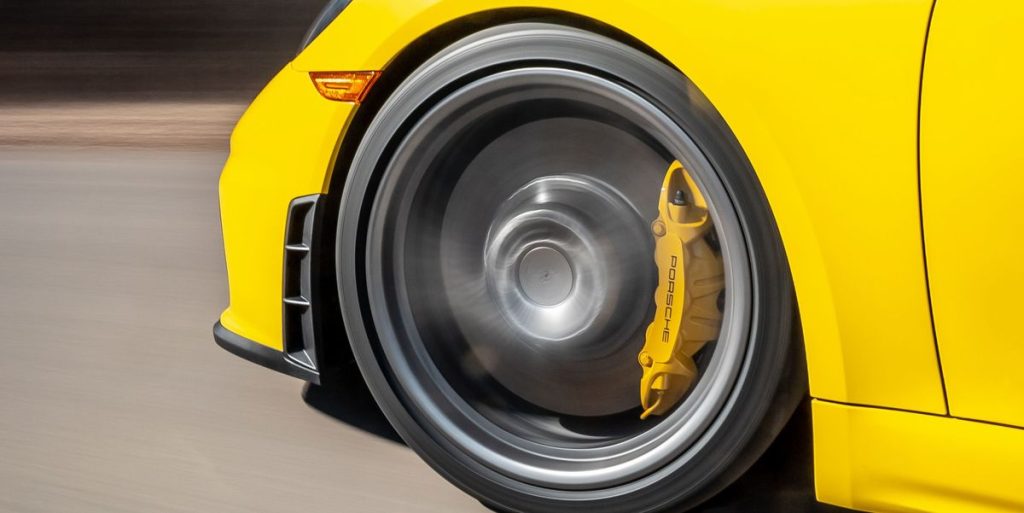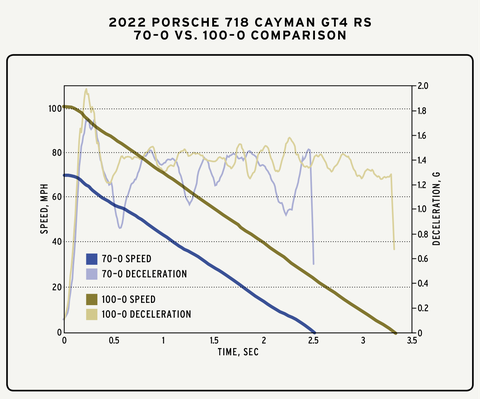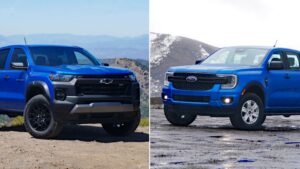Short Stop: We've Added a New Brake Test to Our Repertoire

Marc UrbanoCar and Driver
From the June 2022 issue of Car and Driver.
Car and Driver started testing vehicles’ acceleration way back in the 1950s, but it took us a decade to stop. That is, to measure the distance needed to stop. We initially conducted brake tests at 80 mph, but in the early 1970s, we settled on 70 mph. Back then, braking distances averaged around 200 feet, serious fade occurred regularly, and automakers had yet to implement anti-lock technology to optimize the braking force at each contact patch. Today’s hardware makes fade rare in our standard six-stop routine. And last year the average stopping distance shrunk to 168 feet, even as tested curb weights have ballooned by nearly 50 percent in the past five decades to almost 4400 pounds. Performance-oriented vehicles do even better and often cluster around 150 feet from 70 mph. To further challenge those vehicles’ fortified brakes, we’ve started doing three stops from 100 mph in addition to the 70-mph bogey. Kinetic energy swells with the square of speed, so a stop from 100 mph takes more than double the energy as from 70, making this a challenging test that should create more than a few feet of separation among results.
Let Me Stop You Right There
Any braking test is a measure of how quickly the entire braking system gets up to peak performance and stays there throughout the stop. A vehicle with a strong system should stop from 100 mph in about double the distance it does from 70. But a number of factors affect the results. For example, a vehicle with aerodynamic lift will have less traction available early in a stop, whereas a vehicle with downforce will benefit from plenty of initial bite. As in all braking tests, tire traction is a major contributor to how quickly a vehicle can slow down. In 100-mph testing, particularly with vehicles wearing all-season tires, we occasionally notice grip falling off before any brake-pedal softness. And then there’s how well the brakes shed heat. Stopping a 6781-pound Ram 1500 TRX from 100 mph causes enough brake fade to more than double its stopping distance from 70 mph. Fade affects more than just big pickups—the brakes on the Acura TLX Type S and the Cadillac CT5-V also wilt from triple-digit speeds. We’ve just recently begun to compile 100-to-zero data, and for now, Porsche sits atop that leaderboard with the 718 Cayman GT4 RS, which took only 242 feet (with an average of 1.38 g’s), against 132 feet from 70 mph (1.24 g’s).


Illustration by SinelabCar and Driver
This content is created and maintained by a third party, and imported onto this page to help users provide their email addresses. You may be able to find more information about this and similar content at piano.io


